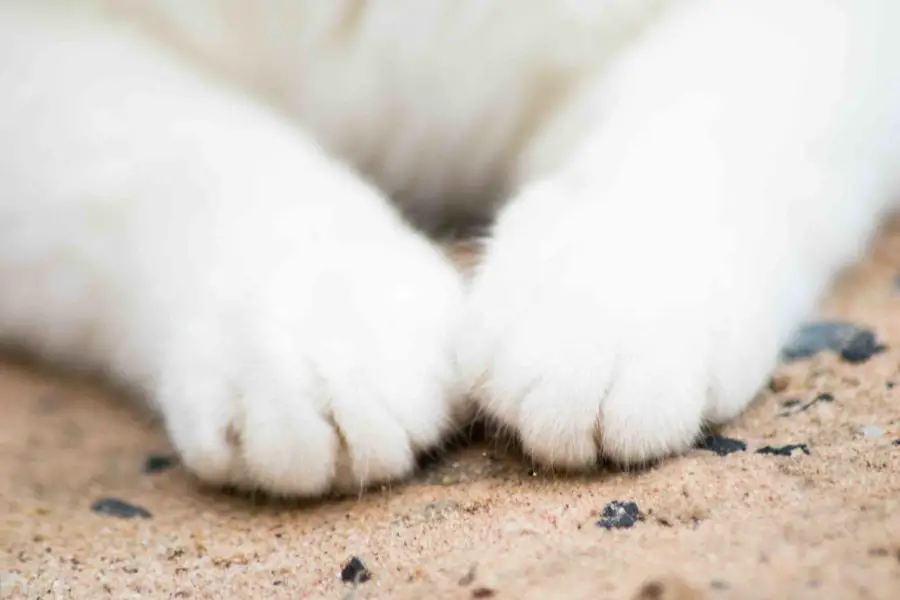Acknowledgements: This post was written in conjunction with Dr. Jean Hofve, DVM. Thank you Dr. Jean, for sharing all of your veterinary knowledge with me in order to help improve the lives of cats everywhere. And a special thank you also to Lori, City The Kitty’s mom, for bringing awareness about the ill-effects of declawing and advocating for laws to protect cats.
Jady
Jady was adopted on June 11, 2016. It was “Just One Day” and she had been brought in as a stray. She was on “death row” far longer than usual, because Animal Control thought her owners would come looking for such a beautiful cat. Her owners never came for her.
To be clear, Jady wasn’t a stray cat. She is front-paw declawed. And nature doesn’t declaw cats. At some point in her life, she had a home.
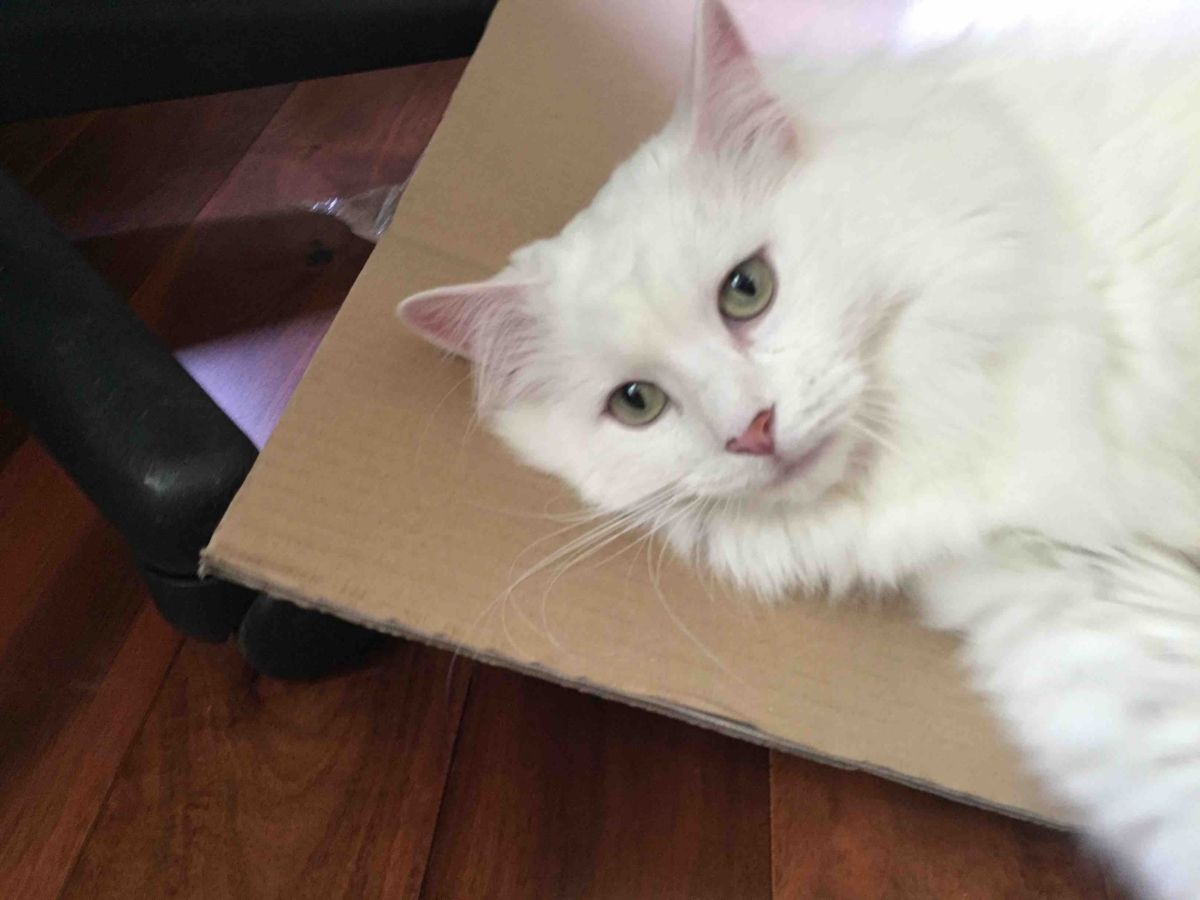
Jady laying on a box – one of her favorite hobbies!
While at the shelter, she caught my attention – she was stunningly beautiful and very vocal. I couldn’t resist her charm. Initially, I brought her home as a foster so that the shelter would have more room to save more cats. It didn’t take long for her to adjust. She had a healthy appetite and an outgoing, inquisitive personality.
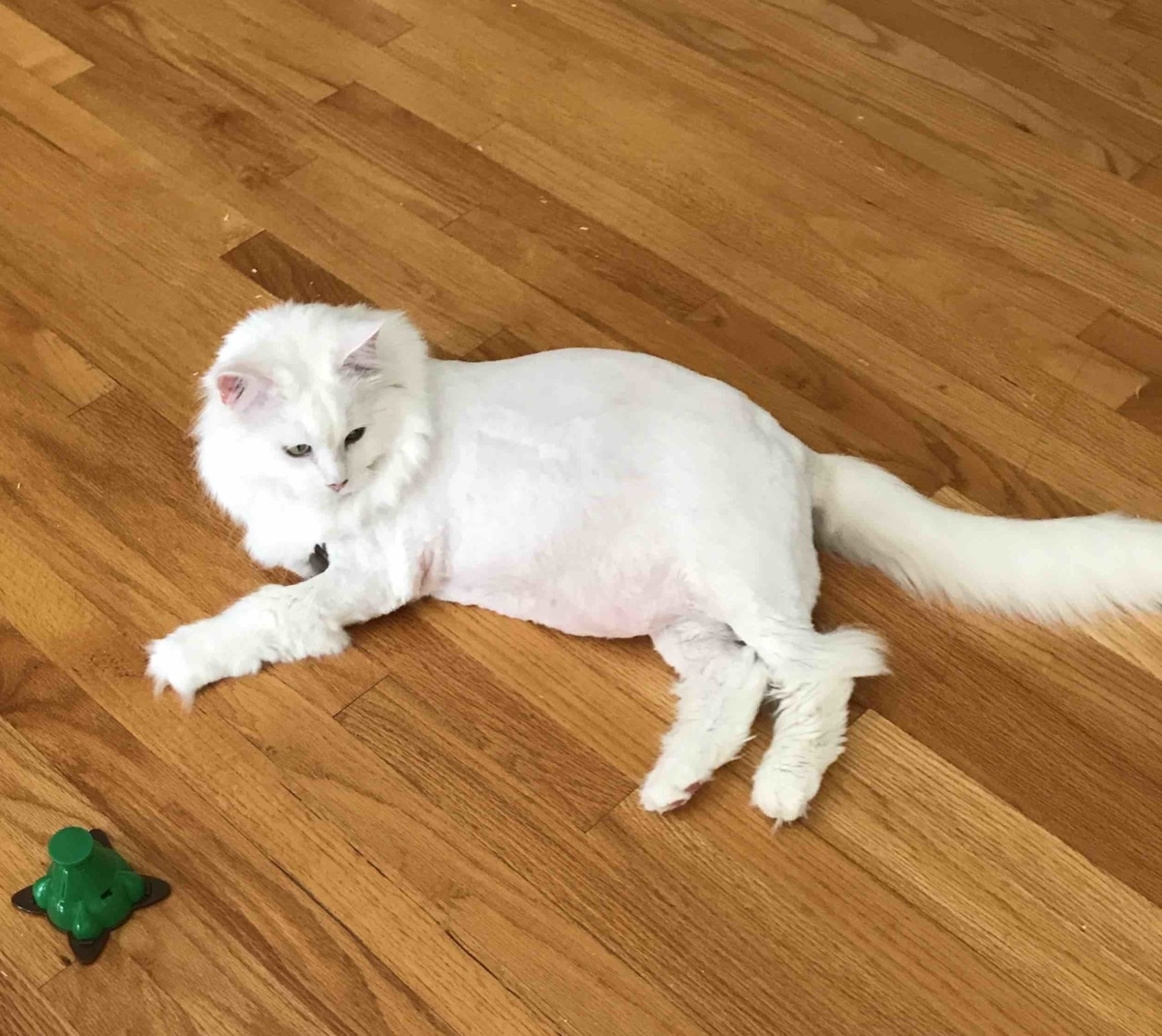
Jady after getting a lion cut at the groomer. No more fleas or mats!
While she was beautiful, she was also mess – both on the outside and the inside.
She was extremely matted and full of fleas. I tried to comb her, but she would bite me. I would gently pet her and she would bite me. I took note of this in the back of my mind and continued to love her.
When I took her to the groomer to rid her coat of the mats and fleas, I had to warn the groomer that “she’s a biter,” so that no one would get hurt.
Aggression in Declawed Cats
Jady was aggressive with humans and with my other cats – attempting to bite them when they walked by her. She also displayed other aggressive behavior like blocking doorways and passageways. Despite this, I was (and continue to be) committed to working with her.
Experts say that it is not uncommon for declawed cats to be aggressive, and even to bite. This is likely due not only to pain, but also because their primary defense (claws) is gone.
A dozen studies over the years have documented an increase in both aggression and litter box avoidance in declawed cats. The most recent study (2017) found that, relative to clawed cats, declawed cats are:
- Three times more likely to have back pain
- Seven times more likely to not use the litterbox
- Four and a half times more likely to bite
- Three times more likely to be aggressive
- Three times more likely to barber (over-groom, chew or pull out hair)
Signs of Pain in Declawed Cats
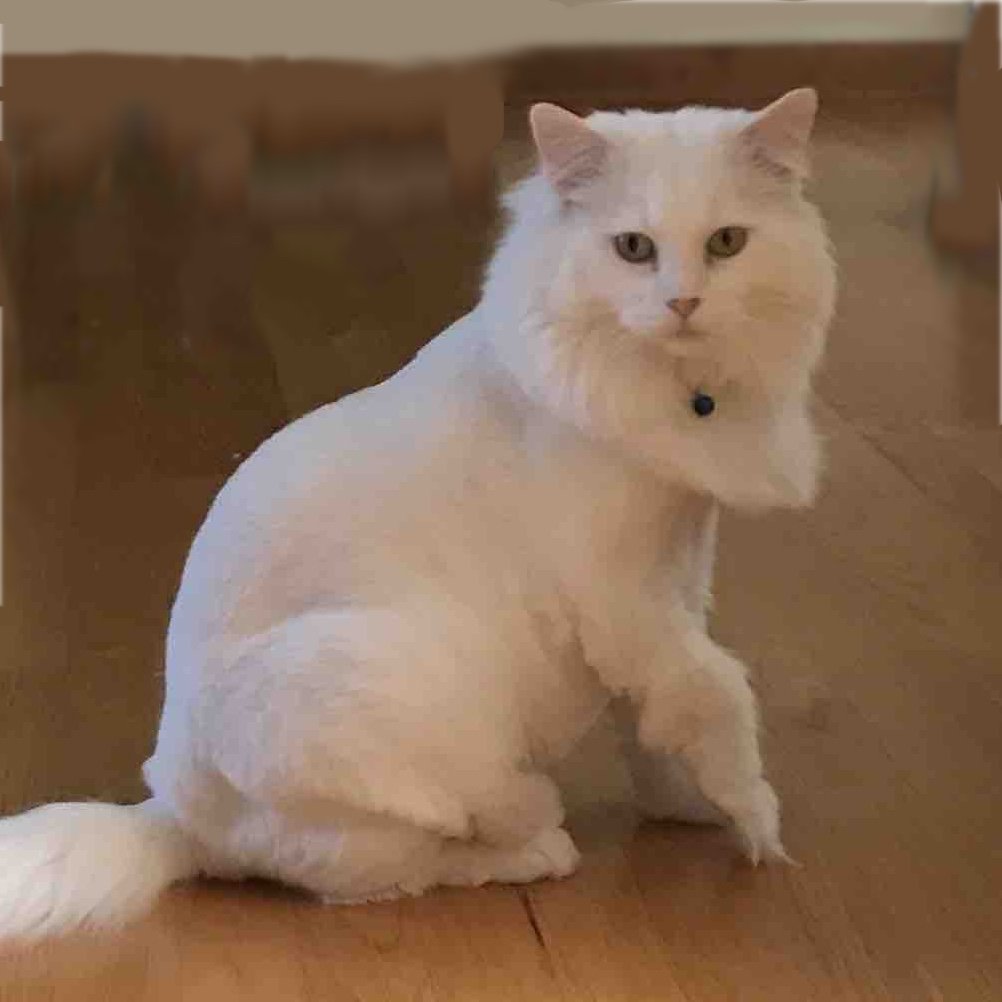
Another oddity that I noticed was that Jady would often hold her right paw up. I took her to the vet and they said that nothing was wrong and that she may have a slight sprain – but nothing to worry about. I brought her home, but the raised paw behavior continued.
Almost a year and three vet visits later, I asked my vet to take x-rays of her paw, even though they still didn’t think there was anything wrong. To me, it just didn’t seem right that she was continually holding her right paw up.
My vet took x-rays that confirmed she had nothing structurally wrong with her paw. No sprain. No arthritis. No bone spurs. Nothing. My vet finally concluded that Jady was suffering from phantom pain from a declaw procedure she had long ago.
Diagnosis: Phantom Pain
Phantom Pain? Jady’s pain was coming from the claws she no longer had.
The Mayo Clinic says “Phantom pain is pain that feels like it’s coming from a body part that’s no longer there. Doctors once believed this post-amputation phenomenon was a psychological problem, but experts now recognize that these real sensations originate in the spinal cord and brain.”
Among human amputees, 100% experience phantom sensations, and about 80% of those sensations are painful. Cats have the same basic pain receptors and neural pathways as humans or any other mammal, so can be expected to have the same reaction to amputation. They also have specialized sensory nerve cells at the base of each claw, which has been suggested as another possible cause of phantom pain. It is virtually certain that declawed cats, who have had 10-18 separate amputations, experience painful phantom sensations, at least occasionally, for the rest of their lives.
I asked my vet what could be done to help her and she shrugged, “Not much.” She said that we could try giving Jady Cosequin and fish oil (my cats like Nordic Naturals) to help with inflammation, but really, this was something she would live with and endure for her entire life.
Are you kidding me? How sad. No wonder she is a biter. No wonder she is aggressive. This poor cat is in constant pain.
Exploring Options To Help Cats With Phantom Paw Pain
I took her home and immediately reached out to City the Kitty’s mom, Lori. Having written this blog for close to six years, I’ve had the privilege of meeting and connecting with a lot of really cool people in the “cat world.” If you don’t know City the Kitty, he’s a polydactyl cat that advocates (along with his mom, Lori) against declawing. They track countless stories of cats who have suffered from botched declawing procedures – some ultimately having their paws completely amputated. City’s mom, Lori, put me in touch with Dr. Jean Hofve, DVM, a feline veterinarian with more than 23 years of experience. Now retired, she runs the popular website, LittleBigCat.com, which she founded with cat behaviorist Jackson Galaxy, some 14 years ago. Both Jackson and Dr. Jean are passionate cat advocates, and they are extremely passionate about anti-declawing policy and practice.
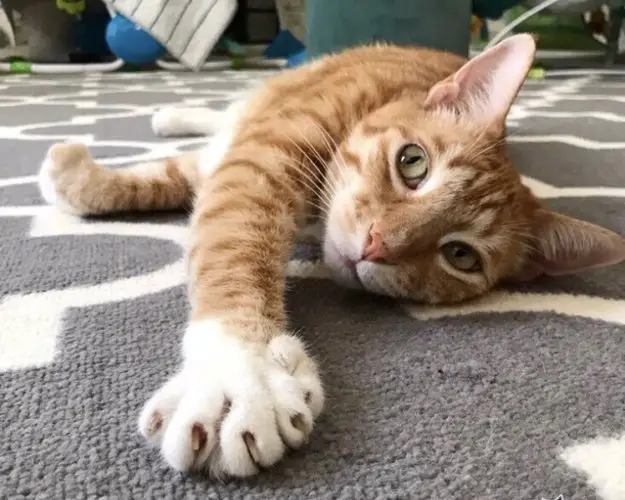
City The Kitty, Catvocate for the No-Declaw Movement
Dr. Jean’s Advice to Help with Phantom Pain
I reached out to Dr. Jean and she had a lot of really great advice for me. She writes an amazing blog and has tons of resources on declawing. She pointed me toward her article on relief for declawed cats which includes suggestions such as:
- Medication prescribed for nerve pain
- EFT (Emotional Freedom Technique)
- Flower Essences
- Homeopathy (consult an experience homeopathic veterinarian)
- Massage and stretching protocols
- Flexor tendonectomy salvage surgery
If you think your cat may be suffering from phantom pain from being declawed, read Dr. Jean’s article on declaw remedies and then talk to your veterinarian.
Next Steps
I’m currently experimenting with a variety of the suggestions above and so far, Jady seems to respond positively toward massage, EFT and fish oil. When I notice her holding her paw up, I give her paw a very gentle massage and she seems to really enjoy it (no biting). She also seems better on the fish oil, but honestly, it’s hard to say, but it seems like she’s holding her paw up less. As I’ve worked with her, her biting has definitely decreased, but she is still pretty aggressive; I know it’s going to be a long process.
Moving Forward
When I was a child, we declawed our cats. It was the normal thing to do, and veterinarians would actually recommend it almost like an add-on to a spay/neuter. Today, we’ve learned a lot, and many countries (about 30), have banned the practice of declawing, including in the U.K., the European Union, and Australia.
While we can’t change the past, we can definitely make better choices in the future. I hope that after reading Jady’s story, which is all too common, you’ll choose to let your future cats keep their claws.
#pawsneedclaws
This blog contains affiliate links. For more information about third-party advertising on this site, please click here.
